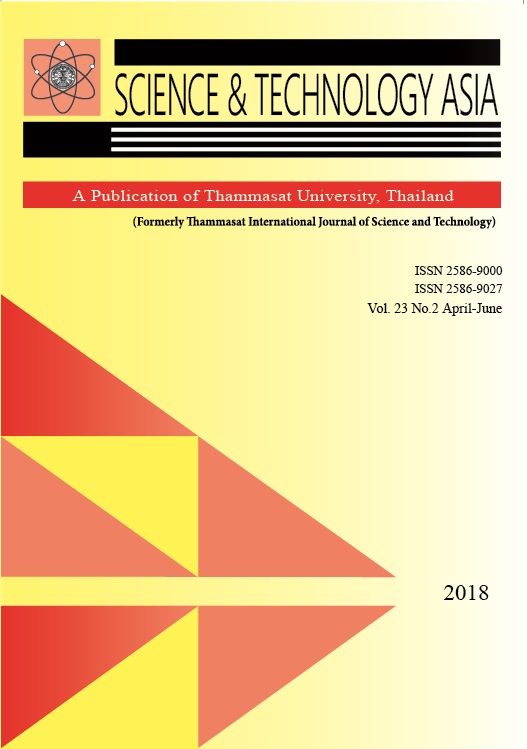Influence of Whey Protein on Stability of α-Mangostin Entrapped in Alginate/Whey Protein Beads
Main Article Content
Abstract
Although encapsulation efficiency of various biopolymers has been documented, no attempts have been made to investigate stability of α-mangostin entrapped and an encapsulation efficiency of biopolymer beads in different conditions. In this study, the efficiency of whey protein (W) and Alginate (A) to encapsulate α-mangostin was assessed through the investigation of the α-mangostin content stored at different conditions. Particle size and stiffness of biopolymer beads were measured. An increase in whey protein content enhanced gel viscosity, which resulted in particles with significantly higher dimension size and weight (p<0.05). A decrease in encapsulation efficiency was found at higher temperatures and lower pH values. However, higher encapsulation efficiency was observed in gel beads which contained whey protein (50A : 50W and 60A : 40W) at all conditions. An increased protein content resulted in a higher gel network density and retention of the α-mangostin in the beads. The released α-mangostin content decreased with increasing protein content at all conditions during storage. The results confirmed that the α-mangostin stability was significantly governed by both conditions and the use of whey protein to protect the target compound.


